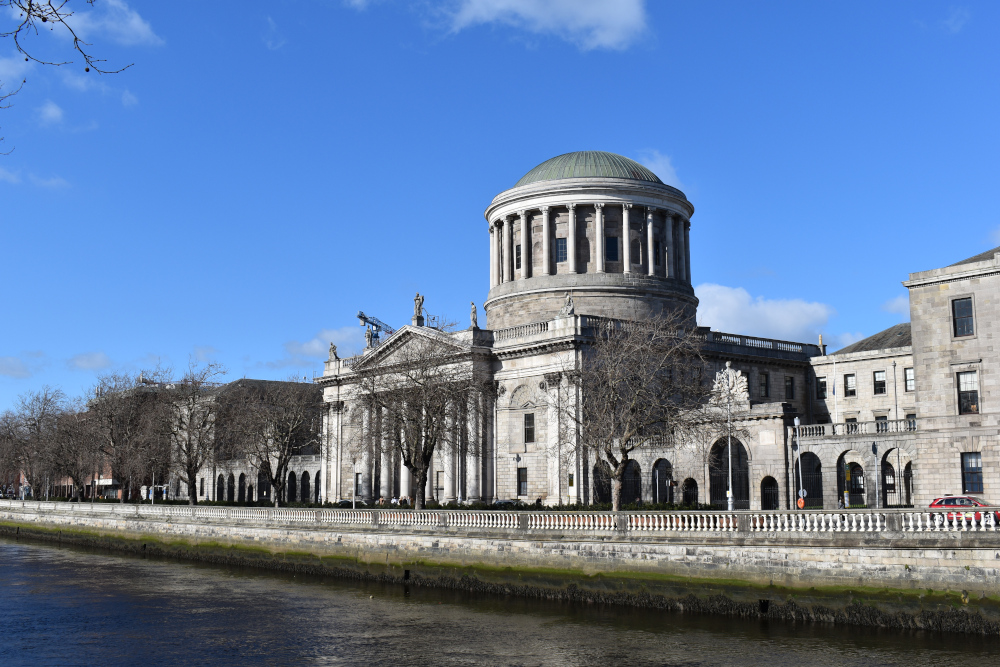Supreme Court: Second preliminary reference to CJEU in extradition case

The Supreme Court has made a second reference to the Court of Justice of the European Union (CJEU) in a case where the UK seeks the extradition of a man accused of committing IRA-related terrorism offences in Northern Ireland.

About this case:
- Citation:[2024] IESC 47
- Judgment:
- Court:Supreme Court
Delivering its judgment, the seven-judge Supreme Court stated: “The issue is one which may arise in other EU member states, in the event that the surrender to the United Kingdom of a person accused (or convicted) of terrorist offences is sought. Article 49(1) cannot have different meanings in different member states. Only the Court of Justice can provide a definitive ruling as to its meaning.”
Background
The UK sought the surrender of the appellant pursuant to a UK-EU Surrender Warrant dated 26 November 2021 issued under the Trade and Cooperation Agreement between the European Union and the United Kingdom (TCA) for IRA-related terrorism offences allegedly committed in Northern Ireland in July 2020.
The appellant objected to his surrender, alleging that changes to the law in Northern Ireland relating to sentencing and the regime governing release on licence had changed in April 2021 but applied to all terrorism offences whenever committed, meaning a heavier penalty could be imposed on him than applicable at the time of his alleged offences.
In 2022, the High Court ordered the appellant’s surrender. The appellant was granted leave to appeal directly to the Supreme Court. The appellant relied on Article 7 of the European Convention on Human Rights (EHCR) and Article 49(1) of the Charter of Fundamental Rights of the EU as precluding his surrender on the basis that the imposition of a heavier penalty than that applicable at the time of the offence was prohibited.
The Supreme Court sought a preliminary ruling from the CJEU as to whether it was entitled to conclude that the appellant failed to establish any real risk that his surrender would breach Article 49(1) of the Charter or whether it was obliged to conduct a further inquiry (and if so, the nature and scope of any such enquiry).
The CJEU initiated the expedited preliminary ruling procedure and on 29 July 2024 the CJEU delivered its judgment under the fictitious name of Alchaster.
The CJEU
The CJEU confirmed that the executing judicial authority was required to carry out an independent assessment, in the light of the provisions of the Charter.
The court determined that any finding of a real risk of a breach of Article 49(1) had to have a sufficient factual basis and that the executing judicial authority could refuse to give effect to an arrest warrant only where, having regard to the individual circumstances of the subject accused, objective, reliable, specific and properly updated information was available establishing “substantial grounds” supporting a real risk of breach.
In examining whether there was such a risk, the CJEU ruled that the executing judicial authority must make full use of the instruments (such as the power to seek further information from the issuing state and to seek additional guarantees therefrom) provided for in the TCA.
As to the nature and scope of Article 49(1), the CJEU distinguished between a penalty and the execution thereof, finding that a measure relating to the execution of a sentence will only be incompatible with Article 49(1) where it retroactively alters the actual scope of the penalty provided for by, for example, essentially repealing the possibility of release on licence or by increasing the intrinsic seriousness of the sentence initially provided for.
The Supreme Court
The parties disputed the effect of the CJEU’s judgment, leading Chief Justice Donal O’Donnell to direct a request for further information pursuant to s.613(2) TCA.
In response, the Magistrates’ Court of Northern Ireland explained inter alia that as at the date of the appellant’s alleged offences, a person sentenced to a determinate custodial sentence under Article 8 of the Criminal Justice (Northern Ireland) Order 2008 would have been entitled to release on licence at the expiry of 50% of their sentence.
The Magistrates’ Court further advised that should the appellant be surrendered and a determinate custodial sentence imposed, the provisions of Article 20A of the 2008 Act (inserted by s.30 of the Counter Terrorism and Sentencing Act 2021) would apply and he would now be entitled to release on licence only after the expiry of two-thirds of his sentence.
The returned before the Supreme Court in September 2024. The Court examined the alleged offences, finding that as at July 2020 the appellant would have been entitled to a determinate sentence in respect of his first offence. As to the remaining three offences, the appellant would have been entitled to either a determinate, extended, indeterminate or life custodial sentence.
The court considered the minister’s position that the ‘penalty’ in the appellant’s case comprised the prison sentences which he could receive, the length of which had not changed and that the measures introduced by the 2021 Act relating to the ‘execution’ of the determinate sentences which could be imposed upon the appellant did not entail a heavier penalty than that initially provided for.
The appellant contended that the 2021 measures went beyond a mere “hardening of the detention situation” and instead had the “effect of increasing the intrinsic seriousness of the sentence initially provided for”.
The appellant highlighted inter alia that prior to the 2021 measures, there was an automatic and unqualified entitlement to release on licence once half of the term had been served, which entitlement was removed in 2021 essentially repealing the possibility of release on licence, at least for the period between half and two-thirds of the term imposed.
The Supreme Court noted that it is a court of final resort and considered that as per Case C-561/19, Consorzio Italian Management v Rete Ferroviaria (ECLI:EU:C:2021:799) the fact that the Supreme Court had already made a reference to the CJEU did not affect its obligation to make a reference where a question concerning the interpretation of EU law is raised before it.
Finding that the question as to the meaning of ‘penalty’ in Article 49(1) was central to the resolution of the appeal, the Supreme Court opined: “This court does not consider that issue to be clear or obvious. Neither, in the court’s opinion, has that issue been clearly resolved by the Court of Justice’s judgment of 29 July 2024.”
The Supreme Court continued: “On the one hand, it is arguable that the nature and purpose of the 2021 amendments to the 2008 Order relate only to a change in the regime for release on licence and thus do not form part of the ‘penalty’… On the other hand, it is arguable that those measures retroactively alter the actual scope of the penalty because they go beyond merely delaying ‘the eligibility threshold for release on licence’ by depriving prisoners of the entitlement to release as a matter of legal right once one-half of their sentence is served and substituting, for that right to release, a delayed and conditional eligibility for release”.
Conclusion
Accordingly, the Supreme Court stayed the appeal and referred the following question to the CJEU:
“Would the application, to a person convicted of an offence or offences and sentenced to a determinate sentence(s), of amended rules having the effect that he or she will have to serve at least two-thirds of such sentence and then will have only a conditional right to release on licence dependent on an assessment of dangerousness, whereas under the rules applicable at the time of the alleged offences, that person would have been automatically entitled as a matter of law to release on licence once he had served one-half of that sentence, involve the imposition of a ‘heavier penalty’ on the convicted person than the penalty applicable at the time of the alleged offences such as to amount to a breach of Article 49(1) of the Charter?”
Minister for Justice v. Walsh [2024] IESC 47









